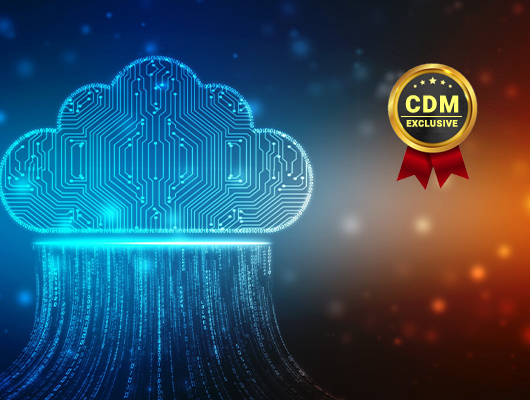Remote working has accelerated the need to better secure endpoints everywhere
By Simon Townsend, CMO, IGEL
Just a few years ago we were predicting Desktop-as-a-Service (DaaS) would soon have its day as enterprises were looking for a way to keep up with the BYOD, multi-device, and user mobility movements. It was time to rethink the ‘desktop’ from a fixed-location to a fluid endpoint that could be anywhere – one which could exist as any device, and increasingly delivered virtually. Fast-forward to today and the COVID-19 crisis, and the need to adopt a more modern approach to managing and securing the endpoint has become painfully clear.
Enterprises have had to pivot overnight to a workforce sheltering in place with people working remotely on a variety of devices that may or may not have been up to date on security protocols. With evidence mounting that companies like Twitter are blessing working remotely as a regular option going forward, there are a few conclusions: 1) the workspace has to be digital since people are using multiple devices, on-site or remotely, 2) endpoint security needs to embrace this new work model and close all security gaps, 3) DaaS and the cloud will become even more important to deliver consistent, secure user experiences, and 4) Virtual Desktop Infrastructure (VDI) continues to be an optimum strategy for maintaining system integrity from endpoints to the data center or cloud.
VDI and DaaS Up to the Task
New pressures on IT teams in response to the evolving COVID-19 recovery are not going to come with bigger budgets or more staff. The increased need to improve security and ensure any asset used remotely is governed correctly via user profiles, associated policies, and access control, all while supporting productivity, is added to the day-to-day IT process challenges businesses to face. In a recent survey of IT professionals Enterprise Strategy Group (ESG) found, after software licensing, inventory and compliance, the main challenges in delivering a full-featured desktop centered on the pace of change (30%), troubleshooting issues (29%) and operational costs (29%).
VDI and DaaS offer solutions to these IT challenges, with the benefit of maintaining a high level of security without impacting user productivity. As ESG notes, businesses have implemented virtual desktop infrastructure (VDI) and desktop-as-a-service (DaaS) to enable remote employees, but only a small percentage of an employee base made use of this technology. Prior to COVID-19, neither technology had reached high deployment, percentage-wise, within organizations. The ESG survey found 40% of respondents indicated that their organization currently uses VDI technology but 25% are on the verge of doing so. Similarly, ESG found 39% of respondents reported DaaS usage but planned an increase. Post-COVID, ESG’s expectation is these deployments will rise to accommodate the changing work environment.
Answering the Rise of Security Questions
The new business landscape has sharpened the focus to the digital workspace, to make sure the basics of data security and risk mitigation are handled at the level needed to ensure business continuity. A more remote workforce has shown how essential endpoint management and security are to business survival. Businesses are looking at:
- Balancing the need for access policy controls with employees’ desire to use more BYOD devices remotely. The ESG survey found a significant disconnect: while 79% of organizations believe VDI and DaaS are more secure than traditional desktop provisioning, 65% of the respondents will have restrictions on the devices used to access VDI or DaaS workspaces. These businesses are not ready to adopt a policy in which employees are allowed to use personal devices. While they perceive VDI or DaaS as superior options, they draw the line at employee-owned devices.
- Embracing a digital workspace solution like Citrix Workspace to further enable secure remote access. Remote application and desktop delivery and access to the web- and cloud-based DaaS apps via a secure browser, paired with secure endpoint management software will enable employees to access their user profile regardless of location. Whether using the cloud or DaaS, workloads, and sensitive data are protected.
- Maintaining a high level of security without impacting user productivity. The ESG survey found improving employee collaboration to be a top priority in delivering desktop environments, followed closely by detecting security incidences, vulnerabilities, and risk, and managing user expectations of access, devices choice, and application preferences. An effective solution is a next-gen, secure Linux OS on endpoints that can be auto-configured based on predefined profiles for simple user access. Device agnostic, this type of advanced endpoint software can enable organizations to secure all those remote BYOD devices without fear of security risk.
Making the New Normal Environment Safe
IT teams are certainly faced with an unprecedented list of challenges this year. However, the tools to secure the new hybrid environment of more people working remotely, fortunately, do exist. VDI providers like Citrix are proven options for secure, device-agnostic desktop delivery. DaaS gives organizations another route to deliver applications via the cloud, on-demand, and securely, enabling business continuity in the case of a disruptive event. Advanced endpoint management software is already in a successful deployment, enabling workers to access their user profiles via the cloud, while IT policy controls are executed to support network security.
Regardless of the system chosen, VDI or DaaS, the task is clear: organizations will need to embrace the use of more personal and BYOD devices, coupled with advanced security software to manage the changing work culture.
About the Author
 Simon Townsend is a global chief marketing officer for IGEL, provider of the next-gen edge OS for cloud workspaces.
Simon Townsend is a global chief marketing officer for IGEL, provider of the next-gen edge OS for cloud workspaces.

